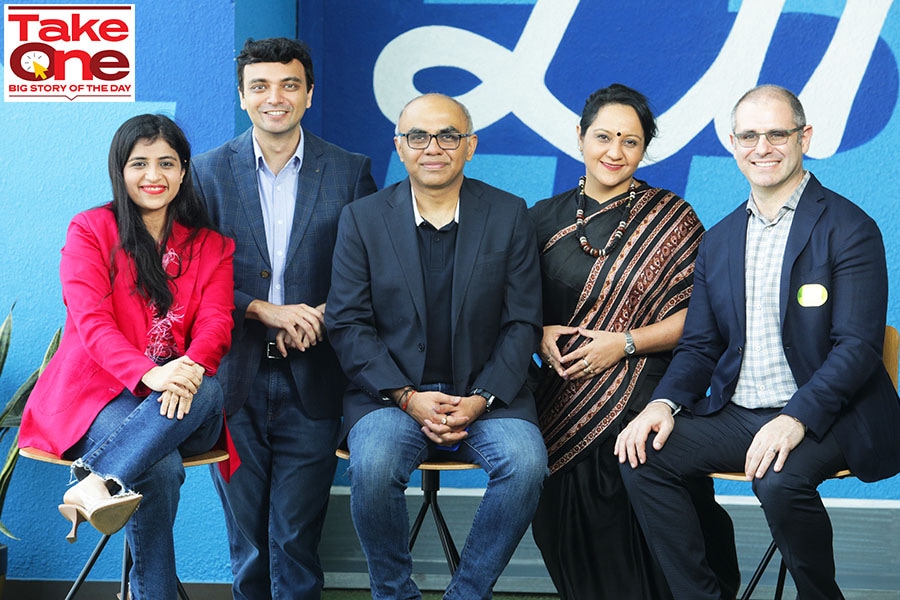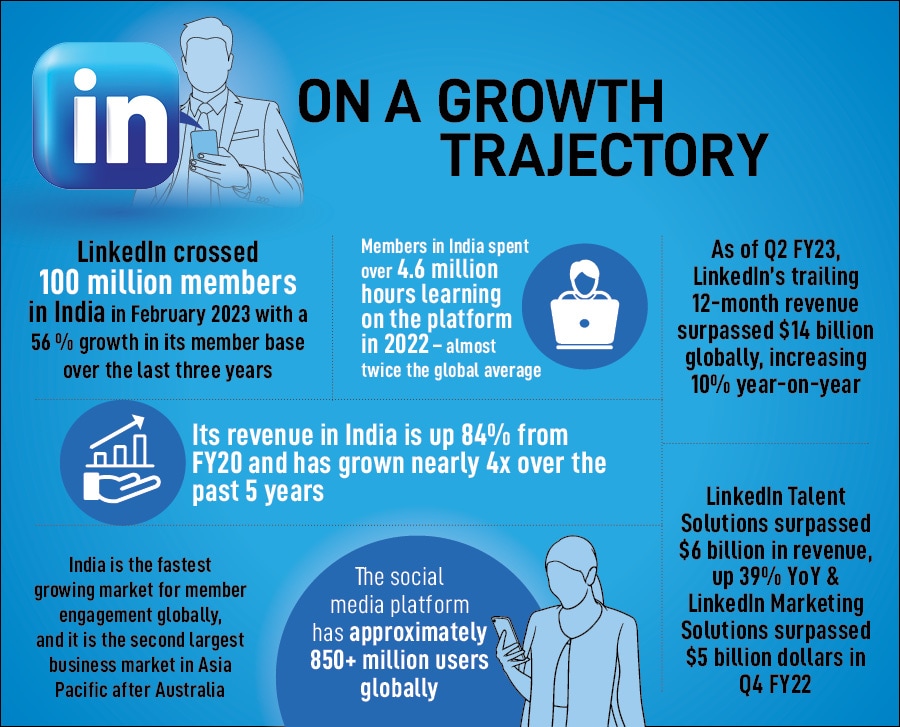
There are 100 million Indians on LinkedIn. Here's how the Microsoft-owned platform cracked the India growth story
The social media platform for employment and professional connections, which recently launched in the Hindi language, is now betting big on the creator economy
 Group picture of (L to R) Pooja Chhabria, Head of Editorial, LinkedIn APAC, Content & Growth, Ajay Datta, Head of Product, LinkedIn India, Ashutosh Gupta, India Country Manager, Ruchee Anand, Senior Director, Talent & Learning Solutions, LinkedIn India and Daniel Shapero, Chief Operating Officer, LinkedIn at Bangalore office.
Image: Selvaprakash Lakshmanan for Forbes India
Group picture of (L to R) Pooja Chhabria, Head of Editorial, LinkedIn APAC, Content & Growth, Ajay Datta, Head of Product, LinkedIn India, Ashutosh Gupta, India Country Manager, Ruchee Anand, Senior Director, Talent & Learning Solutions, LinkedIn India and Daniel Shapero, Chief Operating Officer, LinkedIn at Bangalore office.
Image: Selvaprakash Lakshmanan for Forbes India
In 2009, when social media platform LinkedIn launched its first office in India, there were only four employees. Back then, Daniel Shapero—who was the then vice president, product, at LinkedIn—was one of the only global leaders to have visited India.
Thirteen years later, along with Ashutosh Gupta, India country manager of LinkedIn, Shapero was cutting a cake celebrating a massive milestone—100 million members in India. Microsoft-owned LinkedIn’s India growth story, particularly in the last couple of years, has been phenomenal.
Gupta, who joined the company in 2013, says India has 20 million members, and “it has been a 5x growth in the last 10 years. Last January, we were at 76 million members, and right now, it’s 100 million”. Apart from members and engagement, the company has grown in terms of revenue as well—84 percent from FY20. LinkedIn has not revealed exact revenue numbers. India is the fastest growing market for member engagement globally, and it is the second largest business market in Asia Pacific after Australia.
Shapero is not surprised by the pace at which the market is growing. “We see India as a market that is critical to where we are going. We’ve made some focussed investments here,” the chief operating officer at LinkedIn tells Forbes India, during his recent visit.
One of the main reasons for growth, reckons Shapero, is that “In the last three years, we are seeing LinkedIn become successful with members and companies across industries and in a range of locations in India. In our early days, it was a tool used mostly in metro cities by people working at multinationals.” The platform has seen a 30 percent year-on-year growth in new members.










